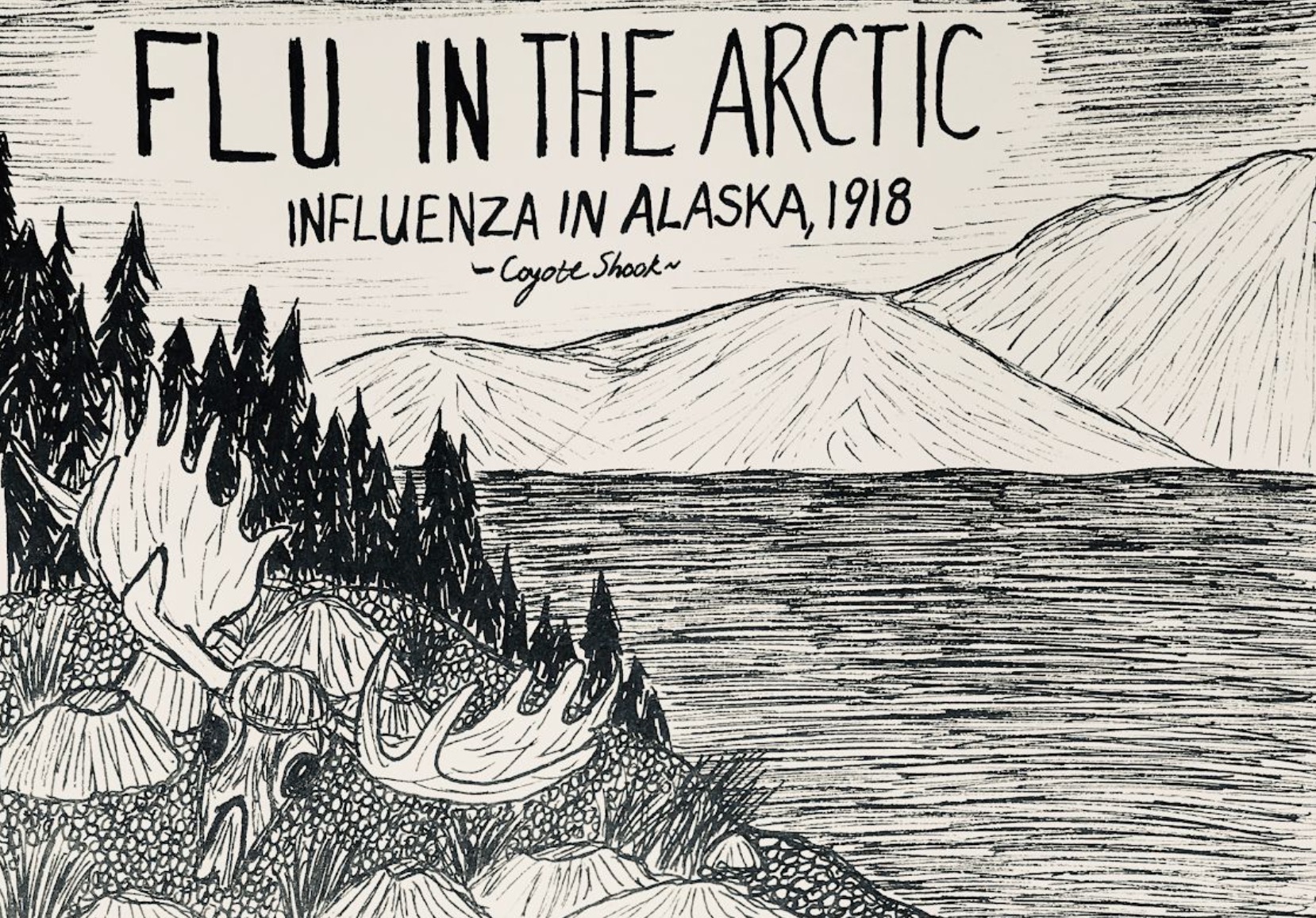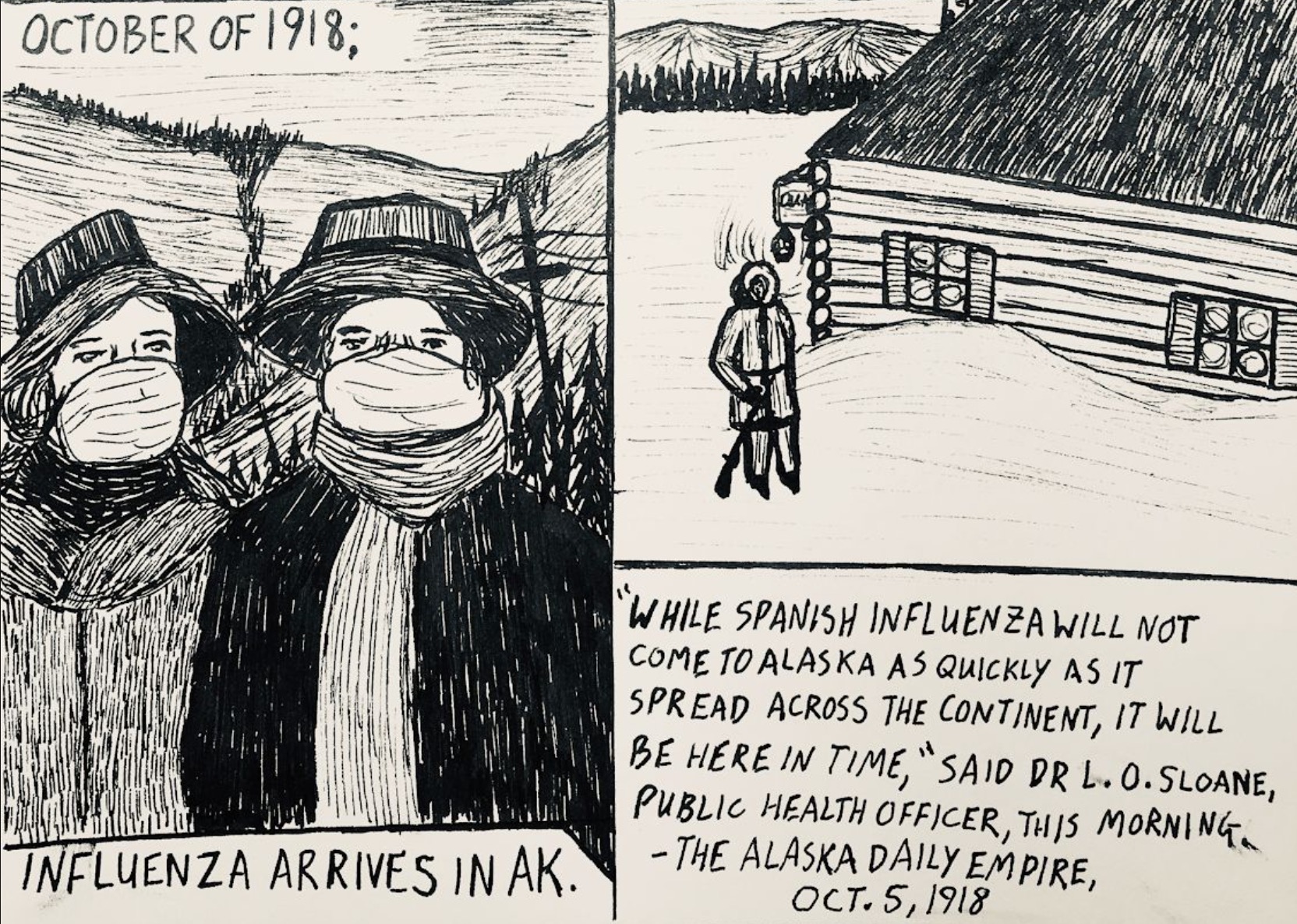By Coyote Shook
June 9, 2020
This graphic essay leads off a new series on the SHGAPE blog exploring the lived experience of Americans during the 1918 influenza pandemic. Also be sure to check out the list of further readings below. Read the other posts in the series here.
View the full PDF of “Flu in the Arctic” here.
Or read the text of “Flu in the Arctic” with image descriptions here.
Coyote Shook
Coyote Shook is a PhD student in American Studies at the University of Texas, Austin. Their research examines intersections between medicine, disability history, and agriculture science in Gilded Age and Progressive Era America, specifically the eugenics and euthenics movements and their use of agriculture editorials and state fairs to promote the “construction” of perfect bodies. Other essays have included an analysis of the influence of euthenics and the home economics movement in Laura Ingalls Wilder’s poultry farming editorials for The Missouri Ruralist, amputation and prosthetic limb fundraising in the wake of the 1888 Schoolhouse Blizzard, the overlapping rise of Better Babies/ Fitter Families contests and the dairy advertising through butter sculptures at midwestern state fairs, and the material history of the 4H Club on American Indian reservations, all of which they have written in graphic essay format. They have an MA in Gender Studies at the University of Wisconsin, Madison and an MS in English Education from Fordham University. They’re a Fulbright Scholar (Poland, 2014) and a State Fair of Texas blue ribbon-winning homecook.

